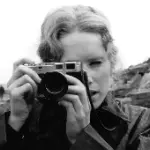From the moment John Wick tossed that gold coin to Charon at the Continental Hotel front desk, the "John Wick" film series established a captivating fictional world.
It's a game of chess being played on a global scale, governed by ancient rules of engagement. In this game, one side is made up of those who swear allegiance to the High Table, the dark forces ruling the world, while the other side is made up of those who seek to overthrow it.
The core concept of "rules and consequences" meticulously crafted in the "John Wick" series provided a solid narrative foundation for Chapter 4, allowing director Chad Stahelski and star Keanu Reeves to present an action-packed spectacle on screen. This is the longest and most visually impressive film in the 'John Wick' franchise.

In honor of "John Wick 4," let's take a retrospective look at the first three movies and relive those heart-pumping scenes that once had us on the edge of our seats.
The story of the first John Wick movie is very simple. John Wick used to be a notorious hitman but left the criminal life behind to be with his wife. Unfortunately, his wife passed away, leaving him with nothing but a dog named Daisy. The son of mafia boss Viggo, Josef, is foolish enough to steal John's car and, to make matters worse, kills Daisy in front of him. Enraged, John decides to seek revenge and begins a one-man mission to take down the entire criminal organization.

From the beginning, the movie established the style of the entire series: a fast pace, no dragging or dragging on, and no time wasted on villainous monologues. The story developments are all within the audience's expectations.
After all, action movies are about keeping the audience in a state of excitement, and occasionally having some fun, which is enough to make it a "good" movie.
The action design in the first John Wick movie compensates for the simplicity of the story. While not as pretty or humorous as Jackie Chan movies, the fight scenes are clean and lethal, every move is deadly.
There are three major action scenes in the film. The first takes place in John's home, where the director showcases John's superior martial skills as he easily takes out dozens of attackers. The second scene is at the Red Circle Bar, where John kills multiple people with just one gun before tracking down and killing Josef at the safe house. The third and final scene takes place at the docks, where John shows off his driving skills before engaging in hand-to-hand combat with Viggo.
However, it must be admitted that the story of "John Wick 1" is a bit thin, and some of the action designs are not exciting enough.

In the second film, "John Wick" underwent a complete upgrade in its action sequences. The movie also incorporates the atmosphere of a western and a cyberpunk feel to its color scheme. It pays homage to Buster Keaton's Sherlock Jr. in its opening montage, setting the stage for the film's masterful action sequences.
In the first film, John Wick's infamous pencil killings in a bar were only mentioned but never shown. However, in the sequel, the director brings this scene to life. John Wick is on the run with a $7 million bounty on his head, and every hitman in town is after him for the prize. But those who try to kill him end up dead. One of them is killed by a pencil, just as the legend goes.
The climax of the film takes place in a museum, where John Wick takes on a group of heavily armed assassins. The tension is palpable as multiple mirrors reflect the action, and John displays his expertise with guns and hand-to-hand combat. He dispatches his opponents with ease, using them as human shields and delivering deadly blows to his enemies. It's a thrilling finale that leaves the audience on the edge of their seats.

Where there are people, there is a world of strife. When John Wick steps into this world, he becomes entangled in the complexities of human relationships and can never easily walk away.
From the moment others come to him seeking his promised badge, John Wick is imbued with a sense of destiny. Violence and bloodshed are his fate, and he will be bound to it for life. Thus, a twisted game unfolds, with him asking someone to kill him, then sending someone to kill that person, only to be double-crossed and hunted by them in return.
Breaking the rules of the Continental Hotel has made him a target of the High Table, and the stage is set for a thrilling showdown.
The second installment unfortunately repeats the same mistake as the first. The villains are too weak and Wick is like the Grim Reaper wielding his scythe, easily overcoming any obstacles without any resistance from the antagonists. Moreover, the action design lacks diversity and becomes monotonous over time, leading to aesthetic fatigue. This is a flaw in the creativity of the action direction team, and it's also evident that Keanu Reeves is starting to show his age and is struggling to keep up with the physical demands of the role.
However, despite its shortcomings, this film still managed to break records with a global box office of $174 million, which inevitably led to the production of the next installment in the "John Wick" series.
If the first two films had shortcomings in story, the third installment largely made up for this. With a crossover with "The Matrix" and "Assault", the "John Wick" universe expanded to its full potential. The High Table's dominance over the world of assassins is no longer absolute, and the rules of the game are completely overturned. The result is a bloody, action-packed showdown between the Western warriors.
In the third installment, watching John Wick kill is no longer a crime, but rather an art form. This elegant form of violence presents a near-poetic expression of the aesthetics of brutality. The film's use of multi-mirrored glass rooms, the signature style of production designer Kevin Kavanaugh, dance-like action sequences, postmodern techniques, and continuous shots of fights provide a visually stunning experience for the audience.

In the scene where John Wick walks through the armory alley, the flying knives return once again, showcasing a humorous yet sharp character. In the gunfights, he starts off with a submachine gun to clear the way, before switching to a pistol to finish the job. If the pistol is not enough, he resorts to close combat.
Other notable scenes include the belt kill in the glass house, the horse kill in the stable, and the book kill in the library. The book kill scene pays homage to Bruce Lee's showdown with "Hook" in "Game of Death". These scenes highlight the film's unique and diverse approach to action, showcasing its range and creativity.
The action scenes in the "John Wick" series are not just for sensory stimulation, but are also driven by a compelling story. The protagonist, John Wick, doesn't just mindlessly shoot his way through every situation - he assesses the circumstances and adapts his approach accordingly. For example, he'll engage in hand-to-hand combat at close range, but switch to a shotgun or submachine gun for longer distances. Even during intense shootouts, he'll take the time to reload and check his ammunition, and his rapid-fire movements are quick and efficient rather than showy. It's this attention to detail that sets the "John Wick" series apart from other generic action movies, and has helped it become a global box office success, grossing over $338 million worldwide.
"John Wick" Series Retrospective: One Man Takes On An Entire Mafia(2/2)




























![[ACTION] 🥰 John Wick’s 12 Secret Rules- Something New before John Wick Chapter 4](https://img.peliplat.com/api/resize/v1?imagePath=peliplat/article/20230323/930b6de3dbf4711386b888e5701a3b7a.png&source=s3-peliplat&mode=FILL&width=720&height=340&limit=false)






















View replies 0